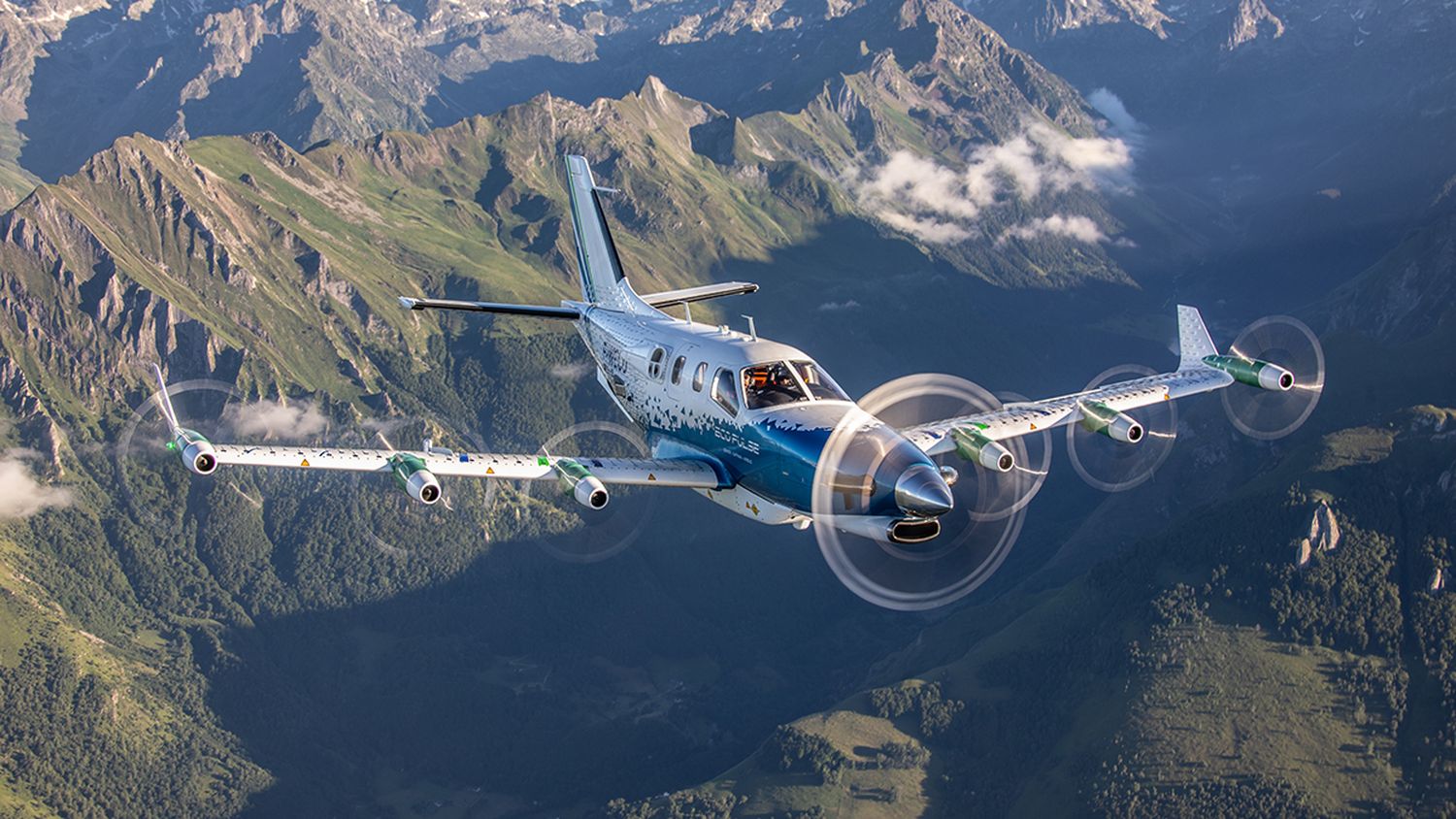Airbus completes the testing campaign for its EcoPulse demonstrator aircraft, which provided crucial data for the development of new hybrid-electric propulsion systems. The project is being carried out jointly with Daher and Safran, paving the way toward decarbonizing air transport by 2050.
The EcoPulse conducted its first hybrid-electric test flight on November 29, 2023, departing from Tarbes-Lourdes-Pyrénées Airport. Since then, it has accumulated 100 flight hours over at least 50 test flights with the hybrid distributed propulsion system, the last of which took place in July 2024.
These tests demonstrated unprecedented levels of onboard electrical power for distributed electric propulsion, with a network voltage of approximately 800 volts DC and an output power of 350 kilowatts.
The flight tests yielded significant results, including an objective assessment of the maturity of hybridization technologies, an evaluation of performance when integrated into the aircraft, and the identification of operational limitations.
Thanks to the EcoPulse test campaign, it was demonstrated that synchronizing the ePropellers can reduce interior noise. This synchronization is an added advantage of the innovative flight control computer, primarily designed to maneuver the aircraft, replacing traditional control surfaces by adjusting the distribution of electrical power among the ePropellers.
Jean-Baptiste Manchette, Head of Propulsion of Tomorrow at Airbus, stated that «this EcoPulse campaign enables us to advance certain hybrid-electric technologies, such as high-voltage batteries, and integrate them into future airplanes, helicopters, and urban air mobility solutions. With distributed electric propulsion, we achieve our goal of modeling flight physics and energy management at the aircraft level, which are key elements in shaping the next generation of aircraft.»
Key findings
The EcoPulse testing campaign identified the main challenges for decarbonizing aviation by 2050. These include designing electric and hybrid-electric architectures, developing key components like batteries to optimize performance and operational range, and high-voltage management systems exceeding 400V.
Pilot assistance through specialized interfaces will be a critical factor for operating new hybrid-electric engines, and after testing, the weight and noise of the powerplants will need to be optimized. The flight testing campaign laid the groundwork for compliance documents to meet regulatory requirements for hybrid-electric propulsion flights, forming the basis for certifying the safety of innovative aircraft configurations.
Collaboration
The EcoPulse project showcases the strength of cooperation between Daher, Safran, and Airbus, combining their expertise and testing resources. Throughout the trials, the partners demonstrated significant synergies between general and commercial aviation.
The EcoPulse is based on Daher’s TBM aircraft platform and is equipped with six ePropellers, supplied by Safran, distributed along its wings. Its propulsion system integrates two energy sources: a turbogenerator (a gas turbine-powered generator) and a high-voltage battery pack supplied by Airbus.
At the heart of this architecture is a Power Distribution and Rectification Unit (PDRU), which protects the high-voltage network and distributes available electrical energy, along with high-voltage supply harnesses (both provided by Safran). The battery, designed by Airbus, has a nominal capacity of 800 volts DC and can deliver up to 350 kilowatts of power.
The demonstrator also benefits from the European aerospace manufacturer’s expertise in aerodynamic and acoustic integration, with Airbus developing the flight control computer that enables aircraft maneuvers via the ePropellers and their synchronization to support future acoustic recommendations for aircraft.
Eric Dalbiès, Senior Vice President for Strategy and Chief Technology Officer at Safran, stated that «we are particularly pleased with the success of the EcoPulse program and its results. This was the first time we tested a full hybrid-electric propulsion system in flight, and these tests marked an important milestone in our technology roadmap. The lessons learned allow us to continue validating decarbonization technologies.»
Pascal Laguerre, Daher’s Chief Technology Officer, noted that «EcoPulse has enabled Daher to take a crucial step in developing a low-carbon aircraft. This project has not only helped us design an operational system for a demonstration prototype but also address critical technological hurdles. Thanks to this rich and unprecedented collaboration, we have made significant advances toward hybridization.».


Comentarios
Para comentar, debés estar registrado
Por favor, iniciá sesión